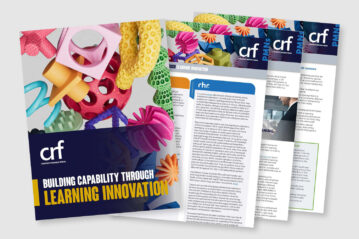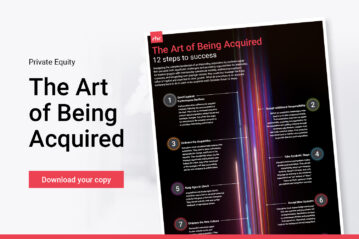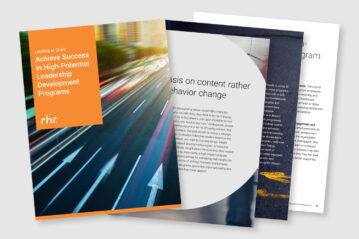Do You Want to Accelerate Your Organization’s DI&B Journey? Try the Three C’s

We believe diversity and inclusion should be a journey of the heart but have been overly fought with the power of the mind instead. What does that mean? Generally, organizations follow a distinct and predictable path. The first stage focuses on bringing the conversation to the table, creating space for discussion, and perhaps kicking off initiatives and investing resources. As organizations continue to move through their transformational journey, the focus shifts to putting hard business metrics in place to legitimize the efforts and create a higher degree of accountability, and to increase the focus on development, acquisition, and retention. The gold standard on this journey (based on best practices from leading organizations) includes creating strategic objectives, launching programs that cut across all of HR and Talent, driving metrics that impact compensation and deliver value to the business, and ensuring consistent and clear communication and advocacy from the executive team.
The research and programs in this space are more robust and more focused than they have ever been. So why are best-in-class organizations still struggling with the same, or at least similar, challenges such as retention, attraction, and pipeline development of the female and diverse talent in the organization despite effort and investments over time? More importantly, why are employees, specifically racially, ethnically, and culturally diverse employees, still feeling excluded and shut out of key opportunities? Why are women still trying to find equity and a space for the capabilities they bring to the table? These are big questions that often have well-intentioned, well-meaning, and results-oriented business leaders scratching their heads.
We believe the answer lies not in the what but in the how. Organizations are doing many things “right,” and those starting on their journey now have access to incredible best practices that will meaningfully accelerate the change journey. However, what is often missing is a true sense of connection and purpose to DI&B from the C-suite—who are ultimately responsible for creating a culture that fosters a deep sense of belonging. We define belonging as having the ability to be seen, to participate in difficult conversations, and to have a feeling of trust in the system that will support individual growth. How might we cultivate this? We believe it takes curiosity, courage, and compassion.
Curiosity
We must be human in our ability to understand the difference. This means that we must enter our interactions with others with a deep sense of curiosity. Who are they? How did they become the individual they are today? What has shaped them as leaders and contributors to the work that they aspire to and are doing? This may not be radical, but it requires the ability to really connect, take the time and effort to engage, and seek to understand. Purposefully creating an emotional connection to the experiences others have had and fast-tracking trust is a critical requirement for true advocacy and followership. The added side benefit is it begins to dismantle our mental biases.
Courage
Curiosity falls short without courage. Engaging with others who are different than us in a meaningful way is scary. Asking questions and being willing to say the wrong thing or say things in the wrong way feels off-limits. This means being willing to have conversations about race, culture, gender, and all the things that make people unique and different. We need the courage to push us to be transparent about what we don’t know, to admit our mistakes, and to ask for forgiveness for our imperfections when we do not get it right. This is exactly where intention, effort, and interest come together to allow us to learn, grow, and reach out and build deeper understanding and relationships.
Compassion
Neither curiosity nor courage work without compassion. Empathy and the positive intention to place yourself in the shoes of others are critical to keeping difficult conversations safe for everyone. We must be willing to share our own stories, to find the places in which we have felt excluded, and most importantly, to share how our own journeys have shaped how we feel about inclusion and belonging. Employees must see leaders as humans who are willing to be open and curious and who have a genuine interest in the lives of those around them.
Following best practices and setting, metrics help organizations deliver on the right set of tactics and programs, create awareness and accountability, and create space for conversations to occur. However, it is the nature of these dialogues and the everyday connections we make that will create the cultural shifts businesses are striving for and the environments that will bring the best thinking, innovation, and talent forward.
This work is based on a year-long research project by RHR International that included interviews with CEOs, CHROs, diversity and talent officers, and boards. For more information, please contact Cristina Jimenez, cjimenez@rhrinternational.com, or Lawrence James, ljames@rhrinternational.com.







